Incredible advancements are made in perennials every year, so they are easier to grow and more beautiful for us to enjoy in our gardens. We’ve rounded up a group of ten new perennials for sun and shade we think you’ll love as much as we do, including four unique newcomers for shade. Let’s dive in and take a closer look!
NEW PERENNIALS FOR SUN
‘Serendipity’ Allium (Ornamental Onion)
Alliums have become incredibly popular over the last few years, largely because they offer so many of the features that people are looking for in a perennial. These fragrant, ornamental herbs are deer and rabbit resistant, strongly attractive to pollinating bees and butterflies, drought tolerant once established, and long lasting as cut flowers. They are some of the easiest perennials to grow. The new ‘Serendipity’ blooms prolifically with 1 ½ – 2” rosy purple flower globes above a clump of grassy, blue-green foliage in midsummer to late summer.
15-20” tall, 10-15” spread, full sun to part shade, zone 4-8
We love this eye-catching new coneflower for its large, glowing magenta pink flowers that stand on very sturdy stems that never need staking in the garden. They provide the perfect perch for the goldfinches and butterflies who enjoy ‘Delicious Candy’ as much as we do. This coneflower is one of the earliest to bloom in our gardens and is very long blooming into late summer. It is incredibly striking planted en masse in the landscape, but also works as a single specimen to liven up spots that need a punch of color.
18-24” tall, 14-16” spread, full sun to part shade, zone 4-9
Anyone who loves the cottage garden style or is looking for plants to attract butterflies will enjoy this new tall garden phlox. This is a taller, middle of the border perennial that shines every year from midsummer to fall when it is covered in large clusters of light pink flowers with a hot pink kissed center. Extra disease resistance makes this a hassle-free perennial. If you’ve grown ‘Glamour Girl’ phlox and loved her, check out the whole new Garden Girls series.
32-36” tall, 28-32” spread, full sun, zone 3-8
Do you have a low spot in your garden where water tends to pool after a heavy rain, or do you need something to soak up the water from your downspout? This is the perfect plant! Rose mallow loves moisture and uses it to grow almost an inch a day after emerging in late spring every year. The new Summerific® ‘Evening Rose’ is exceptionally striking with its super dark foliage and dinner plate-sized, hot pink flowers that bloom from the top of the plant to the bottom. It is the highlight of the garden from midsummer to early fall. Its foliage will be darkest and the blooms will be most prolific when grown in full sun, though it will tolerate some shade. Most people report rose mallow to be deer resistant, but pollinators enjoy it.
4 – 4 ½’ tall, 4 ½ – 5’ spread, full sun to part shade, zone 4-9
For a low growing, maintenance-free perennial to edge sunny gardens and pathways, choose a Rock ‘n Grow sedum like ‘Pride and Joy’. This durable perennial thrives with no extra water and won’t need to be trimmed to keep its neatly mounded shape all season. In late summer, the succulent foliage becomes completely covered in bright pink flowers that feed pollinating bees and butterflies. It returns reliably every spring in zones 3-9.
10-12” tall, 16-20” spread, full sun, zone 3-9
Splashy rose-purple flower spikes bloom abundantly on this densely mounded perennial. We love it paired with the lemon yellow, flat-topped flower clusters of ‘Firefly Sunshine’ yarrow and native orange-flowered butterfly milkweed for a amazing trio of brilliant blooms from early summer through midsummer. You’ll enjoy a parade of pollinators for months on these hardy perennials. Could your sunny landscape use a little more pizzazz? This is your answer!
16-18” tall, 16-18” spread, full sun to light shade, zone 4-8
NEW PERENNIALS FOR SHADE
Honeymoon® ‘Tropical Sunset’ Helleborus (Lenten Rose)
Lenten roses are the harbingers of spring; they are the first perennials on scene every year. Their cheerful, colorful flowers are a welcome sight after a long winter, and they offer a reliable food source for pollinating bees early in the season. ‘Tropical Sunset’ is a new single-flowered cultivar with creamy yellow flowers streaked and edged with burgundy red. The 3” wide flowers last six weeks or more in the garden, depending on the year, and the durable, evergreen foliage remains beautiful all season. Hellebores are highly deer and rabbit resistant and will even grow in dry shade.
18-24” tall, 18-24” spread, part shade to full shade, zone 4-9L
Ferns are some of the most reliable plants that grow in shade, especially since they are typically deer and rabbit resistant. Most are solid green, but Japanese painted ferns flaunt their fronds in shades of pewter and deep purple. ‘Crested Surf’ was named for its “crested” or frilly tips at the ends of each frond. That little detail brings an interesting texture to the shade garden and stands out against broad, flat-leafed plants like hostas and brunnera. This fern thrives in rich, moist soil in the landscape and in containers. Try it paired with ‘Queen of Hearts’, which you’ll read about next.
20-22” tall, 28-30” spread, part shade to full shade, zone 3-8
You may be familiar with ‘Jack Frost’, a classic brunnera that has enjoyed incredible popularity for decades. The new ‘Queen of Hearts’ differs in that its leaves are much larger, more silver, and thicker textured which helps them to be more slug resistant. You’ll also notice that this new cultivar lasts much longer into the fall before going dormant, and that’s due to its strong disease resistance. We’ve been incredibly impressed with this new beauty in our trials and think you will be, too. Try it paired with ‘Crested Surf’ Japanese painted fern and blue hostas like Shadowland® ‘Diamond Lake’.
16-18” tall, 28-36” spread, part shade to full shade, zone 3-8
Indian pinks have long been a sought-after wildflower, but until now it has been hard to find. We are super excited to have supply of this true-red flowering native cultivar this year. Uniquely shaped, upward facing, red flowers open to reveal yellow star-shaped petals in the center of each blossom. The flowers are clustered at the tops of each stem above the dark green, upright foliage. Hummingbirds and pollinating bees enjoy their nectar. If cut back after the first round of flowers, it may rebloom. Indian pinks grow best in full sun or part shade (afternoon shade in the south) and well-drained soil that doesn’t sit wet for long after a heavy rain.
24-28” tall, 20-24” spread, full sun to part shade, zone 5b-9
Watch our new video about ‘Little Redhead’ Spigelia.
Have we whetted your appetite for new plants? See all the new varieties we’ll be offering this year here. Stay tuned for our Top 10 New Shrubs list in our next newsletter.

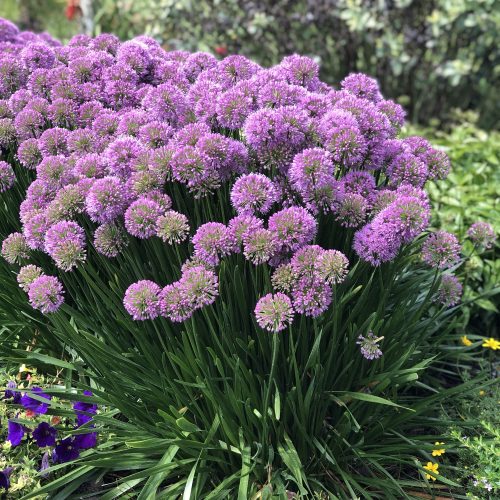
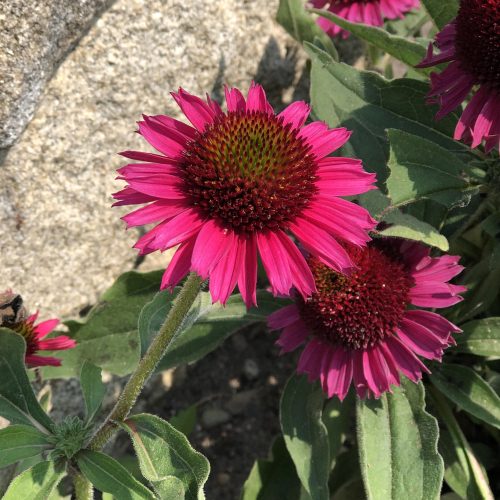
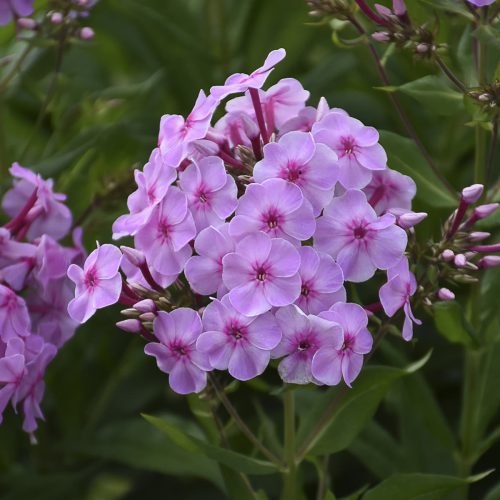
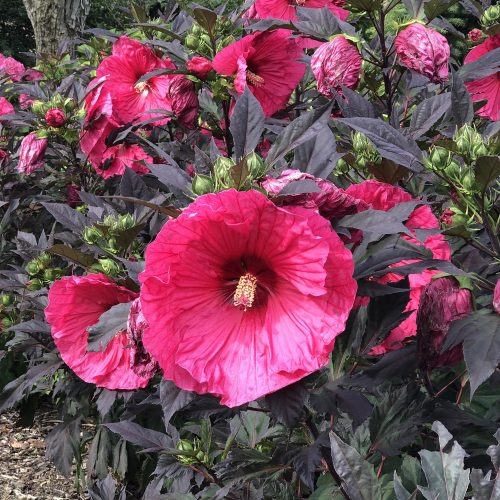
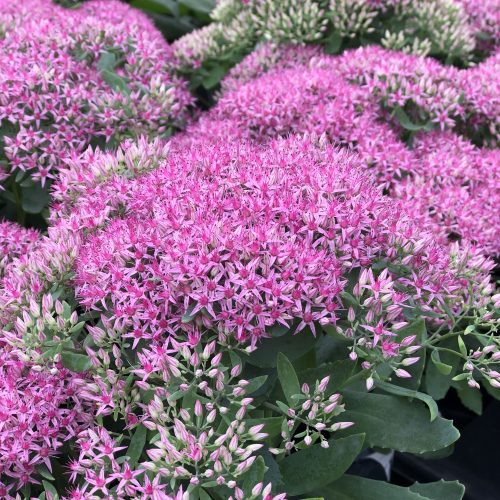
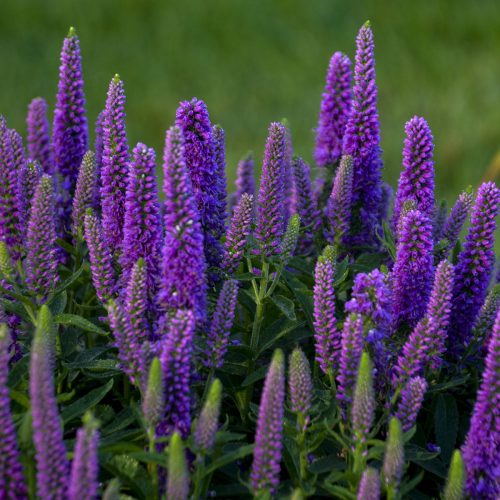
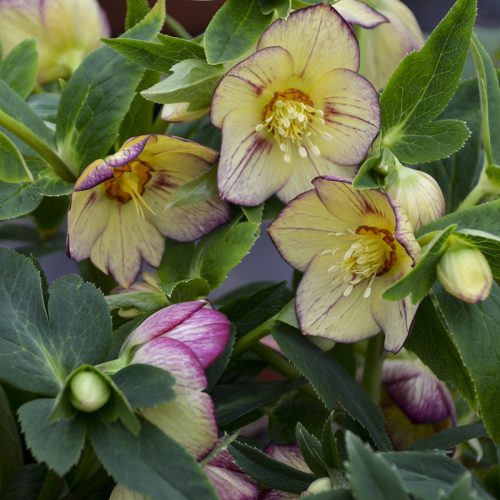
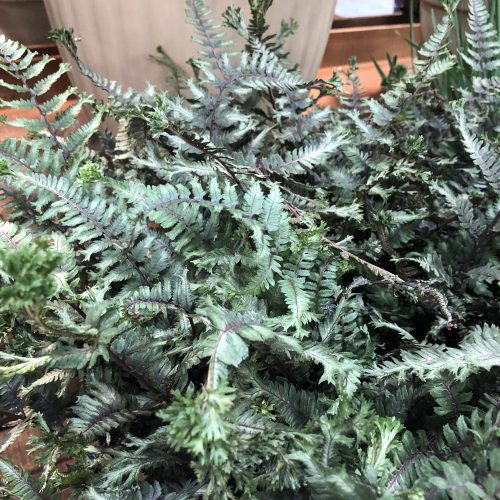
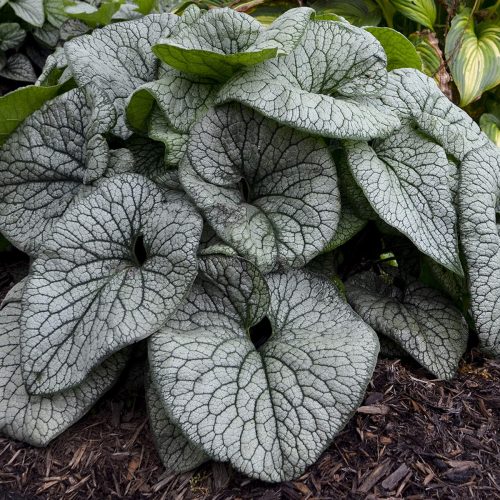
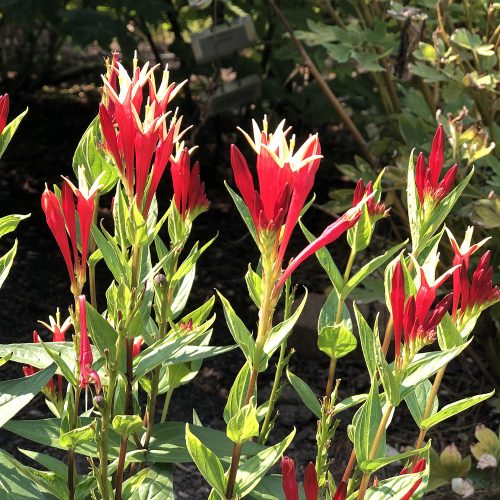
1 thought on “10 New Perennials for Sun and Shade”
Indian pinks are beautiful. I am a born and raised Texan and I have always heard these flowers call Indian Paint Brushes. I have seen fields of these throughout the years. They are more spectacular when bluebonnets are mixed in with them. Just my opinion.